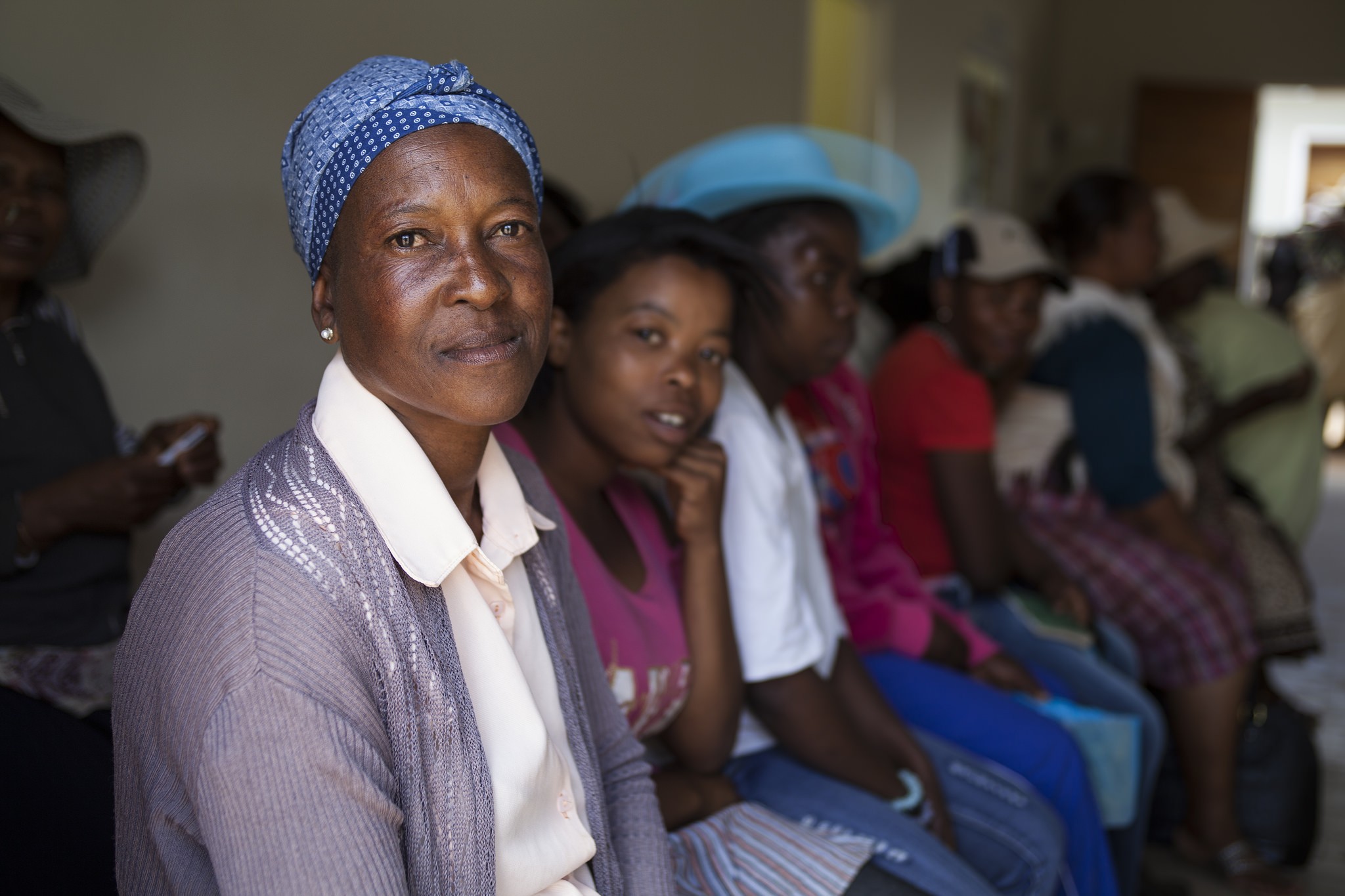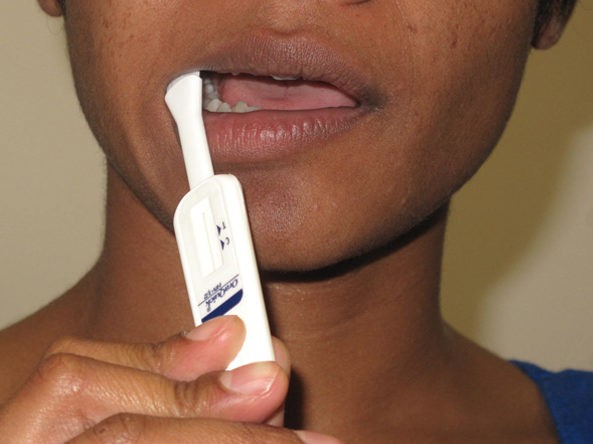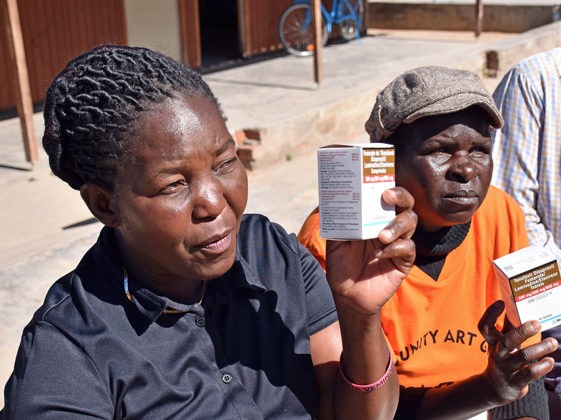Article and Study Summary
Daily and non-daily pre-exposure prophylaxis in African women (HPTN 067/ADAPT Cape Town Trial): a randomised, open-label, phase 2 trial
Published in:
Lancet HIV. 2017 Oct 3. DOI: http://dx.doi.org/10.1016/S2352-3018(17)30156-X
Authors:
Bekker L-G, Roux S, Sebastien E, et al. on behalf of the HPTN 067 (ADAPT) study team.
Summary:
This article reports on the results of the HPTN 067/ADAPT-Cape Town Trial, which was an open-label, randomized study that compared daily versus non-daily oral pre-exposure prophylaxis (PrEP) regimens among high-risk women in Cape Town, South Africa. HIVnegative women were randomized to 24 weeks of oral PrEP (emtricitabine plus tenofovir disoproxil fumarate) on either a daily dosing, time-driven dosing (twice a week and after sex events) or event-driven dosing (before and after sex events) regimen. Women who were assigned the daily PrEP regimen were found to have better coverage of sex events and better adherence compared to those on non-daily regimens. Significantly fewer pills were required to be adherent to the non-daily regimens, compared to the daily regimen and side effects were similar in all groups. This trial demonstrates the feasibility of open-label oral PrEP in African women at high risk of HIV infection, and suggests that daily regimens may increase the effectiveness of PrEP in this population through improved adherence and better coverage of sex events.
Download full synopsis here or read below.
Full Synopsis:
Study Summary
HPTN 067/ADAPT Cape Town Trial (Alternative Dosing to Augment PrEP pill Taking) is a randomized open-label clinical trial that compared sex event coverage and feasibility of daily versus non-daily dosing regimens of oral pre-exposure prophylaxis (PrEP) among heterosexual women at high risk of HIV infection.
Study Setting
- Single prevention research center in Cape Town, South Africa.
- The community served by the center has an antenatal HIV prevalence of up to 29%.
Methods
- HIV-seronegative women aged 18 years or older, who reported one or more HIV risk factor in the previous six months (sexually transmitted infection, transactional sex, intercourse without a condom with someone of unknown or positive HIV status, more than one sex partner) and were immune to hepatitis B virus were enrolled between September 2011 and October 2012.
- Participants were excluded if they were pregnant or breastfeeding, and all participants agreed to use contraceptive methods during the study.
- All participants underwent a six-week lead-in phase, consisting of directly observed dosing of one tablet of oral PrEP (emtricitabine plus tenofovir disoproxil fumarate) once a week for five weeks, followed by one week off drug.
- At week 6 participants were randomized to one of three self-administered PrEP regimens: daily, time-driven, or event-driven.
- Time-driven dosing was two tablets per week (3 days apart), plus a tablet after sex (within 2 hours), with no more than seven tablets a week.
- Event-driven dosing was one tablet within 48 hours before anticipated sex and another after sex (within 2 hours), with no more than seven tablets per week.
- The self-administration phase was for 24 weeks and during that time participants visited the research center every four weeks, and had weekly brief assessment interviews either in person or over the telephone.
- Data collected for analysis included:
- Dosing dates and times from an electronic drug monitoring (EDM) device.
- Weekly self-reported sexual activity and adherence information, which was used to reconcile EDM data.
- Plasma tenofovir concentrations at weeks 10, 18 and 30.
- Information from clinical evaluations, including repeat HIV testing, pregnancy testing, proteinuria, glycosuria, creatinine clearance, liver enzymes, and self-reported symptoms and side effects.
- Primary outcomes were:
- Coverage of sex events with PrEP dosing, defined as at least one PrEP dose within 96 hours (4 days) before and another within 24 hours after sex events (penetrative vaginal or anal sex, regardless of condom use).
- Number of PrEP doses needed to achieve regimen-specific 100% adherence and number of actual doses used.
- Self-reported symptoms and side-effects.
- Secondary outcomes included regimen adherence (defined as percentage of expected doses taken based on regimen and sex events) and detectable tenofovir concentrations in plasma and peripheral blood mononuclear cells.
- All analyses were by intention to treat.
Study Population and Follow-up
- A total of 294 women were screened, of which 191 were enrolled in the six-week pre-randomization phase. 178 women completed this phase and were randomized to the daily (n=59), time-driven dosing (n=59), or event driven-dosing (n=60) regimen.
- Median age was 26 years (interquartile range [IQR] 21–37) and 80% had never been married.
- Of those randomized, 165 (93%) completed the final 34-week visit, with no difference in follow-up by study group assignment.
PrEP Coverage of Sex Events
- There was a significant difference in the total number of sex events reported between the groups (p=0.0018), with women on the daily regimen reporting more sex events (n=1952) than the time-driven regimen (n=1074) or the event-driven regimen (n=1542).
- PrEP coverage of sex events was significantly higher with the daily regimen (75%) than with the time-driven regimen (56%, odds ratio [OR] 2.35, 95% confidence interval [CI] 1.43–3.83) and the event-driven regimen (52%, OR 2.76, 95% CI 1.68–4.53).
- Incomplete coverage of sex events was mostly due to missing post-sex doses.
- PrEP coverage and tenofovir concentrations decreased over time for all regimens.
Number of PrEP Doses and Adherence
- More pills were required for complete adherence in women allocated to the daily regimen (n=9,652), compared to the time-driven regimen (n=3,616) and the event-driven regimen (n=2,203, p<0.0001).
- Adherence to the assigned regimen was higher for those allocated to the daily regimen (75%), compared to those assigned to the time-driven regimen (65%, p=0.0028) and the event-driven regimen (53%, p<0.0001).
Side Effects
- The most common side effects were gastrointestinal symptoms (reported at 11%, 9% and 5% of visits among women on the daily regimen, time-driven regimen and event-driven regimen, respectively); and neurologic symptoms (reported at 12%, 6%, and 8% of visits among women on the daily regimen, time-driven regimen and event-driven regimen, respectively).
- Symptoms were most common upon PrEP initiation, with most symptoms returning to baseline by week 14.
- There were six or fewer grade 3 or 4 events per regimen and there was no difference in the number of events by regimen.
Other Outcomes
- When sex was reported in the previous week, tenofovir was detected in blood samples more frequently in those assigned to the daily regimen (68%), than those assigned to the time-driven regimen (58%) and the event-driven regimen (41%).
- Four participants were found to have seroconverted prior to randomization and were excluded from the final analyses.
- Four more participants seroconverted during the self-administration phase, of which two were on the time-driven regimen and two were on the event-driven regimen.
Critical Analysis
This randomized, open-label clinical trial found that daily oral PrEP resulted in higher coverage of sex events and better adherence, compared to time-driven or event-driven PrEP regimens. It is also the first trial to demonstrate that open-label oral PrEP is feasible among African women at high risk of HIV infection.
The following points should be considered when interpreting the study findings:
- This was an open-label trial, therefore participants and study staff were not blinded to regimen assignment.
- To be randomized and included in the analysis, participants had to complete a 6-week lead-in phase, which could select for participants more likely to engage in care.
- Event-driven and time-driven dosing calculations were based on the best available data at the time, which was from animal models. Participants were informed that only daily PrEP had been shown to be efficacious in humans, which may have influenced the behavior of those on non-daily regimens.
- The higher number of sex events reported by those on a daily regimen raises questions about whether the intervention changed sexual behavior (e.g. risk compensation) or whether it affected the willingness of participants to report sex events to study staff.
- The study was not powered to show the efficacy of oral PrEP, therefore dosing regimens should not be evaluated based on the number of seroconversions.
Implications
The HPTN 067/ADAPT Cape Town Trial demonstrated that daily open-label oral PrEP leads to higher coverage of sex events and better adherence, when compared to non-daily regimens, among heterosexual African women at high risk of HIV infection. Intermittent use of PrEP has the potential to save costs through a reduction in pill numbers, as was demonstrated in this trial. However women were more likely to adhere to a daily dosing regimen, despite the higher pill burden. This study also demonstrated the feasibility of oral PrEP in African women, who were willing to take it in an open-label setting, although adherence across all regimens declined over time. As countries develop plans to implement oral PrEP programs, they must work to improve and sustain adherence in order for PrEP to be effective.









